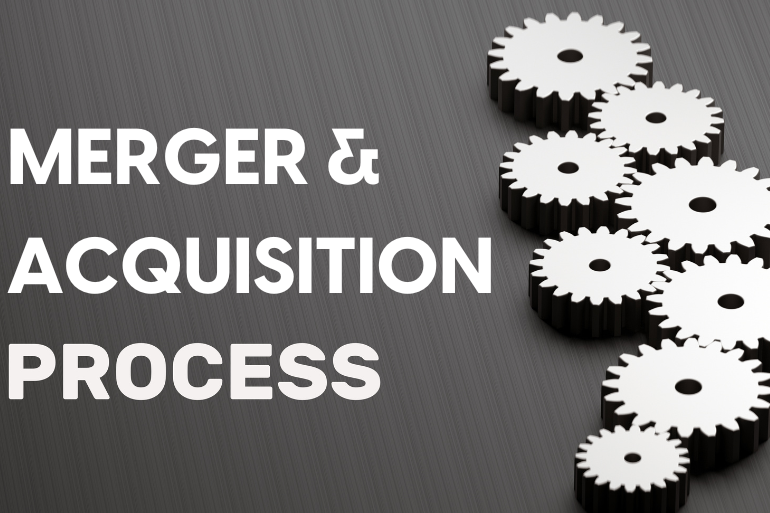If you’re a roofing business owner thinking about selling your company, you’ve probably heard the term “mergers and acquisitions” (M&A). But what does it really mean, and how does it impact your business?
Whether it’s merging two companies into one or acquiring another business entirely, M&A is a powerful tool for growth, competitiveness, and long-term success which has taken the roofing industry by storm recently with roofing company acquisitions happening weekly. Let’s break it all down. We’ll skip the confusing industry jargon. This is all about providing clarity so that you can make the best decision possible.
M&A: What Purposes Do Mergers and Acquisitions Serve?
Before we dive into how mergers and acquisitions differ or why a company might want to go one route versus the other, let’s tackle things from a high level. What are mergers and acquisitions really about?
Ultimately, it’s about positioning and changing the paradigm. For instance, it might be about mitigating risks. It could also be about adapting to emerging trends, making a business more efficient, or even tapping into new audiences.
Here’s a brief rundown:
In a merger, two or more companies come together to create something new (even though it might do business under the name of one of the previous companies). In an acquisition, a business acquires another and usually incorporates its segments into its existing structure.
Both create something more than the sum of its parts but they’re not the same. It’s all about combining capabilities, products or services, and even audience segments in new ways. And there are so many ways this can be done, including:
- One company might buy another outright and absorb it
- A company can merge with another, creating a new brand
- One company might acquire some, most, or all of another company’s assets
- A business might make a tender offer for another company’s stock
- The process might involve a hostile takeover where the company being acquired doesn’t want to be bought or absorbed (but may have little choice)
Mergers and acquisitions can be confusing, but it’s important to go into the process with your eyes open. That’s the only way you, as the business owner, can make an informed decision about what’s right for your company and your own future.
What’s the Difference Between a Merger and an Acquisition?
At their core, mergers and acquisitions are about combining businesses. The distinction is really in how it happens:
- Mergers happen when two companies join forces to create a new, unified entity. Think of it as a partnership where both sides bring something to the table.
- Acquisitions, on the other hand, involve one company purchasing another. Here, one business takes control, integrating the other into its operations.
Both strategies share a common goal: achieving more together than either business could on its own.

Why Do Companies Pursue M&A?
M&A isn’t just about growth. It’s about smart growth. Uncontrolled, unplanned, chaotic growth is never good.
Here are just a couple of reasons businesses might choose to join forces, either through a merger or by acquiring another:
Economies of Scale
Combining companies can reduce costs by spreading expenses across a larger operation. For example, a merger between two manufacturing firms might let them consolidate production facilities and negotiate better supplier contracts. Here’s an example: Compaq and HP merged, allowing the new company to produce more and reduce costs per unit.
Expanding Market Share
M&A can help a business strengthen its position in the market. When Disney acquired Pixar, it wasn’t just about buying a studio. It was about dominating the animation industry. Disney brought classic animation to the table, while Pixar introduced computer animation to the deal.
Diversifying Products or Services
Adding new offerings can reduce risk. For instance, Amazon’s acquisition of Whole Foods let the company expand into the grocery sector, diversifying beyond e-commerce. It’s the same idea that’s behind diversifying personal investments. A wider spread of diverse options means there’s less chance of devaluation if any one particular asset class (or business type, in this situation) hits trouble.
Acquiring New Technologies
Sometimes, the fastest way to innovate is to acquire. Facebook’s purchase of Instagram is a prime example of acquiring a technology platform to stay ahead of the curve. There are plenty of other examples from the tech industry, but they don’t stop there. Nike has acquired multiple businesses that add to its overall technological capabilities, including Invertex, Zodiac, Celect, and Datalogue.
Enhancing Financial Performance
By combining resources, companies can boost profitability and shareholder value. For example, pharmaceutical mergers increase research capabilities while cutting operational costs. AbbVie acquired Allergan for that reason. Other examples include Bristol-Myers Squibb’s acquisition of Celgene and Sanofi’s acquisition of Aventis.
Types of Mergers
Not all mergers are created equal. Here are the main types, each serving a unique purpose:
Horizontal Mergers
This involves two companies in the same industry and at the same stage of production, like when Exxon merged with Mobil. The goal? Strengthening their market position and eliminating competition. The new company, ExxonMobil, is stronger than either company was on its own, and with less competition, there’s more profit to be had.
Vertical Mergers
These occur between companies at different stages of the supply chain. When a manufacturer merges with a supplier, like Tesla’s acquisition of battery producer Maxwell Technologies, it ensures better control over production and costs. It made sense for Tesla to acquire the battery manufacturer to reduce the cost of technology for Tesla’s automobiles. Another example is Apple’s acquisition of P.A. Semiconductor so that the company could begin manufacturing its own chips.
Conglomerate Mergers
In this case, businesses in completely unrelated industries merge, often to diversify. Think of Berkshire Hathaway’s acquisitions across industries like insurance, retail, and energy. Amazon, Alphabet, United Technologies, Salesforce, and Johnson & Johnson are just a few examples of other companies that have enjoyed successful conglomerate mergers.
Market-Extension Mergers
When companies in different geographic markets join forces, they expand their reach. For example, a U.S.-based company merging with a European counterpart might open up new opportunities in both regions. A good example here is the merger between RBC Centura and Eagle Bancshares (because Eagle Bancshares held the Tucker Federal Bank). That gave RBC Centura access to North American customers.
Product-Extension Mergers
These mergers involve companies adding related products or services to their offerings. A classic example is Procter & Gamble’s acquisition of Gillette, which expanded its portfolio of consumer goods. Another good example is the 1977 extension merger between PepsiCo and Pizza Hut. Broadcom acquired Mobilink Telecom, AT&T and Time Warner merged in 2018, Kraft Foods and Cadbury combined forces in 2010, and Heineken and FEMSA merged in the same year.

The M&A Process: What to Expect
Thinking about merging with another business? Perhaps it’s an acquisition on the horizon. Whatever the case, it’s important that you have an idea of what to expect during the process. Selling your business through an M&A transaction is a journey with several key steps:
Target Identification
Whether you’re merging with another company or selling outright, identifying the right partner or buyer is crucial. The goal is to find a match that aligns with your goals and values. If you’re looking to sell, make sure you can amplify your business’s strengths and capabilities for potential buyers. It also helps to know what those buyers are looking for in the first place and how your business fits the bill.
Due Diligence
Buyers will dig deep into your business’s operations, financials, and market position to assess its true value. Transparency is key here. Be prepared for this and have information ready for potential buyers. Highlight your key strengths and capabilities, but be honest about challenges, whether that’s aging manufacturing equipment or an influx of new competitors into the industry.
Valuation
Understanding your business’s worth is essential. A professional valuation ensures you’re setting the right expectations and maximizing your sale price. If you’re actively selling your business, a valuation should be one of the first things you do. Make sure you choose the right valuation technique.
Some of the options include the discounted cash flow (DCF) method, the fair market value method, investment value method, and book value method. They’re not created equal, so it’s important that you understand the pros and cons of each, how they apply to your business, and how the method you choose will ultimately affect your sale.
Negotiation
This is where the deal takes shape. Both parties agree on terms, including price, structure, and timelines. It can take some time for you and the buyer to get on the same page, but accurate documentation and an understanding of what the buyer wants to gain from the deal can help.
Integration
After the deal is closed, the hard work of merging operations begins. Successful integration can make or break the deal’s success. The merge takes many different forms. Obviously, you need to combine employees, managers, and executives (usually after some restructuring). You’ll also need to merge departments (payroll, HR, etc.). However, don’t forget about the physical side of things, like IT assets.
The Benefits and Challenges of M&A
When done right, M&A can transform a business. The benefits include:
- Increased Competitiveness: Larger, more resourceful companies are often better equipped to compete.
- Operational Efficiencies: Streamlined operations can lead to cost savings and productivity gains.
But M&A isn’t without its challenges. Cultural integration issues, regulatory hurdles, and unexpected costs can complicate the process. It takes surprisingly little to derail a promising merger or acquisition. That’s why planning and professional guidance are so important.
Why Expert Guidance Matters
Navigating M&A transactions isn’t something you should tackle alone. It requires a strategic approach, deep industry knowledge, and careful execution. That’s where Axia Advisors comes in.
As a trusted partner in M&A advisory services, we specialize in representing business owners like you. From identifying the right buyers to handling negotiations and integration planning, we’re here to guide you through every step of the process. Not sure if a merger or acquisition is the right path to take? We can help you there, too.
Key Takeaways
Mergers and acquisitions are about more than just financial gain. They’re about unlocking potential and creating something greater than the sum of its parts. Whether you’re looking to sell your business or merge with another, success comes down to three key elements: active preparation, a proven strategy, and the right team by your side.
At Axia Advisors, we understand the complexities of M&A and have the expertise to help you navigate them with confidence. Contact us today to learn how we can help you achieve a seamless, profitable transaction.



